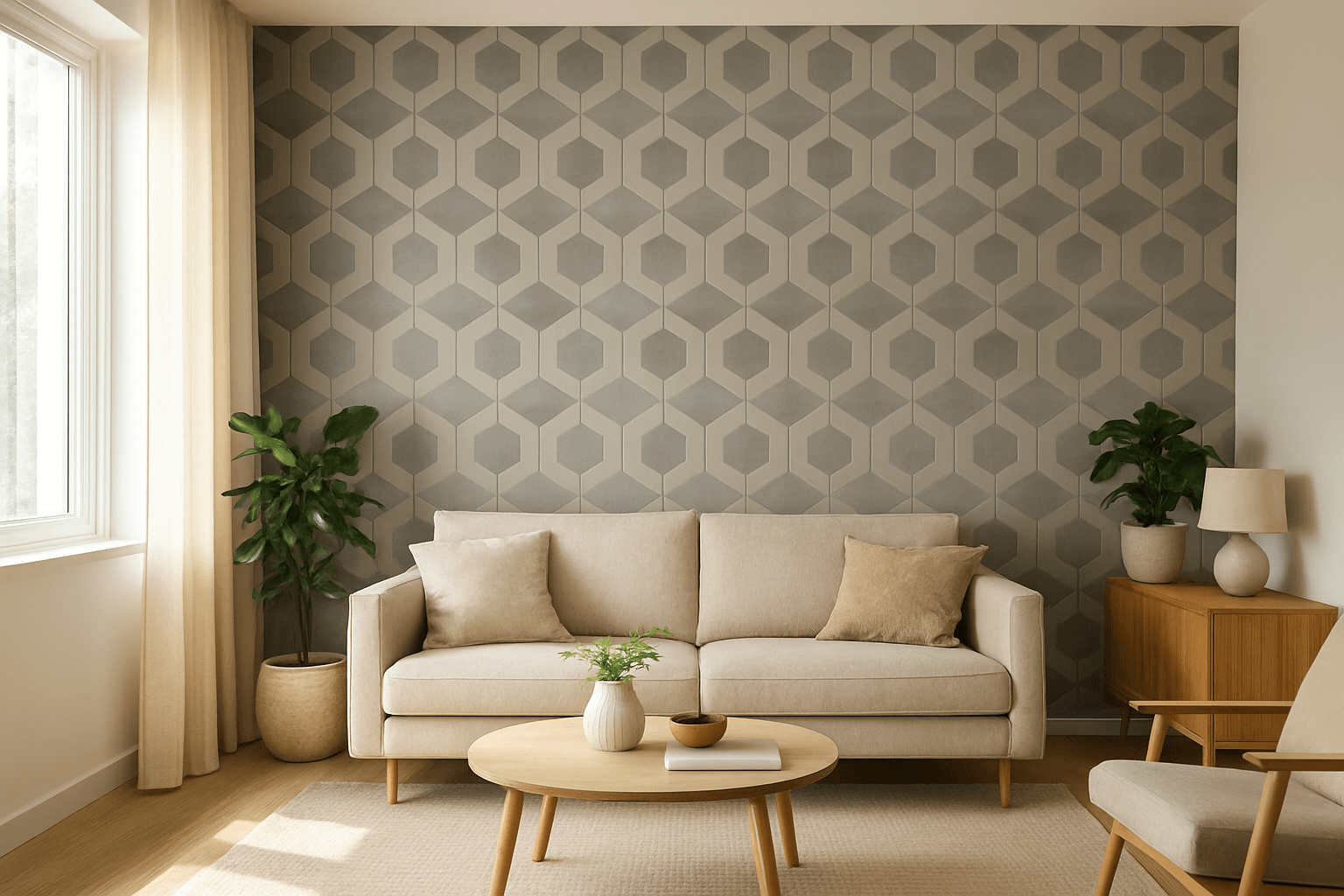The Role of a Wallpaper Decorator
A wallpaper decorator is more than just a tradesperson. They combine creativity, precision, and technical skills to transform plain walls into captivating surfaces. Whether working with luxury wallpaper or budget-friendly options, decorators ensure seamless application, alignment of patterns, and a flawless finish. Their role goes beyond installation—many decorators also help clients choose the right wallpaper styles, considering factors like lighting, furniture, and overall design themes.
Why Choose Wallpaper Over Paint?
Homeowners often debate between wallpaper and paint when updating interiors. While paint offers simplicity, wallpaper brings a level of depth and personality that paint cannot match. Wallpaper can mimic natural textures such as wood, stone, or fabric, instantly adding character to a space.
Durability is another advantage. High-quality wallpaper can last 10 to 15 years, while painted walls typically require refreshing every three to five years. Though the initial cost of wallpaper installation may be higher, it often pays off in the long run by reducing maintenance. For example, textured wallpaper can hide imperfections on uneven walls where paint would highlight flaws.
Popular Wallpaper Styles for Modern Homes
Minimalist and Scandinavian Designs
Minimalist wallpaper focuses on soft tones, clean lines, and subtle patterns. Scandinavian-inspired designs often feature muted colors like beige, gray, and soft pastels, paired with organic textures. These styles complement modern furniture and bright spaces, creating a calm and airy atmosphere.
Bold Patterns and Accent Walls
On the other end of the spectrum, bold wallpaper patterns create striking focal points. Geometric shapes, floral prints, and metallic accents are especially popular in living rooms and bedrooms. Accent walls decorated with bold wallpaper add depth without overwhelming a space. For example, a dark floral print behind a bed can create a cozy, boutique-hotel look.
Essential Tools and Techniques for Wallpaper Installation
Proper wallpaper installation requires the right tools and careful technique. A professional decorator relies on:
- Measuring tape and level for precision
- Utility knife for cutting edges
- Wallpaper adhesive or paste
- Smoothing brush or roller to remove bubbles
- Seam roller for neat joins
The installation process starts with preparing the wall—cleaning, smoothing, and applying primer if needed. The decorator then measures and cuts wallpaper strips, applies adhesive, and aligns each strip carefully. Finally, air bubbles are smoothed out to achieve a seamless finish.
DIY vs Professional Wallpaper Services
DIY wallpapering is appealing for budget-conscious homeowners, especially with peel and stick options that simplify application. However, large-scale projects or intricate patterns often require professional expertise. Misaligned seams, air bubbles, or adhesive mishaps can be costly to fix.
Hiring a professional wallpaper decorator ensures precision and saves time. Professionals also have access to trade-only wallpapers and advanced tools, providing a higher-quality result. DIY works well for small projects, but for entire rooms or luxury wallpapers, a decorator is the better choice.
Current Wallpaper Trends in Interior Design
Wallpaper is enjoying a strong comeback in contemporary interiors. Among the most popular trends are:
- Textured wallpaper: Grasscloth, linen, and embossed designs add tactile richness.
- Peel and stick wallpaper: Ideal for renters, this trend combines style with convenience.
- Eco-friendly wallpaper: Made with sustainable materials and non-toxic inks, these wallpapers align with growing demand for environmentally conscious design.
Designers are also experimenting with ceiling wallpaper, using bold patterns overhead to create unexpected drama.
Case Study: Living Room Makeover with Wallpaper
Consider a modest living room with plain white walls. By adding a soft, textured wallpaper in neutral tones, the space instantly feels warmer and more inviting. The decorator strategically placed a bold patterned wallpaper on one feature wall behind the sofa, creating depth and balance. Combined with natural lighting and minimalistic furniture, the room transformed into a modern, magazine-worthy interior without major renovation.
Maintenance and Care Tips for Wallpaper
Wallpaper is relatively low-maintenance if cared for correctly. Most wallpapers can be dusted with a microfiber cloth or vacuumed using a soft brush attachment. Washable wallpapers allow gentle cleaning with a damp sponge and mild soap. To prolong lifespan, decorators recommend avoiding harsh scrubbing and ensuring proper ventilation in humid rooms. With basic upkeep, wallpaper can remain vibrant and durable for years.
FAQs
1. Is wallpaper cheaper than paint?
Paint is usually cheaper upfront, but wallpaper lasts longer and may be more cost-effective over time.
2. Can wallpaper be installed on textured walls?
Yes, but decorators often recommend smoothing the wall surface first for best results.
3. How long does wallpaper installation take?
A small room may take a few hours, while larger or patterned designs can take one to two days.
4. Can wallpaper be removed without damaging walls?
Peel and stick options remove easily, while traditional wallpaper may require steamers or solvents.
5. What rooms are best suited for wallpaper?
Living rooms, bedrooms, and feature walls are ideal. Bathrooms and kitchens need moisture-resistant options.
6. Is wallpaper safe for kids’ rooms?
Yes, washable and non-toxic wallpapers are available and suitable for children’s spaces.
7. Can I wallpaper over old wallpaper?
It’s possible but not recommended, as it may affect adhesion and create uneven surfaces.

